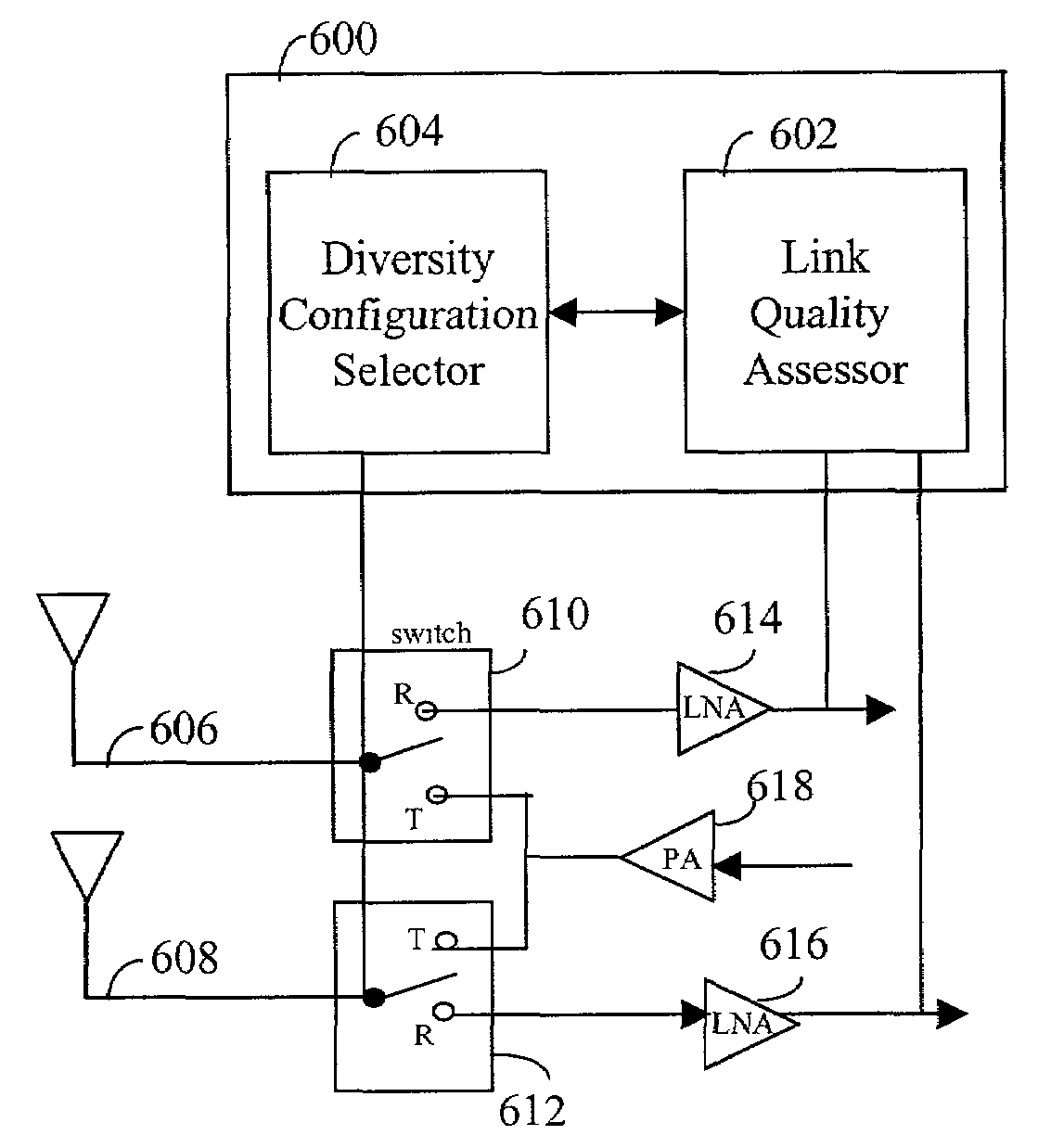Apparatus and method for dynamic diversity based upon receiver-side assessment of link quality
a dynamic diversity and receiver-side technology, applied in the direction of signal quality detection, transmission monitoring, electromagnetic wave modulation, etc., can solve the problems of power consumption, received signal is vulnerable to fading, and the pressure is on to reduce power consumption. , to achieve the effect of improving data rate, enhancing the ability to maintain a reliable link, and sacrificing the data transfer ra
- Summary
- Abstract
- Description
- Claims
- Application Information
AI Technical Summary
Benefits of technology
Problems solved by technology
Method used
Image
Examples
Embodiment Construction
[0023]Consider the representative quadrature amplitude modulation (QAM) system depicted in FIG. 1. The received sample rk is given by
rk=gkAk+nk (1)
where gk represents the fading in the wireless medium, Ak is the QAM symbol and nk is the additive noise. All variables are complex-valued in general. This is a general description of QAM symbols being transmitted over a fading channel corrupted by additive noise. As such, equation (1) can be either a time-domain or a frequency-domain model. In a practical wireless system that utilizes a finite number, say N, fixed frequency bins, the model of equation (1) is applied with an underlying assumption that the k-th symbol transmission occupies the (k modulo N)-th frequency bin. Bins are used in a successive manner from the first bin to the last one, and then back to the first one and so on. Among specific examples of the latter system are frequency division multiplexing (FDM) and orthogonal frequency division multiplexing (OFDM) systems.
[0024...
PUM
 Login to View More
Login to View More Abstract
Description
Claims
Application Information
 Login to View More
Login to View More - R&D
- Intellectual Property
- Life Sciences
- Materials
- Tech Scout
- Unparalleled Data Quality
- Higher Quality Content
- 60% Fewer Hallucinations
Browse by: Latest US Patents, China's latest patents, Technical Efficacy Thesaurus, Application Domain, Technology Topic, Popular Technical Reports.
© 2025 PatSnap. All rights reserved.Legal|Privacy policy|Modern Slavery Act Transparency Statement|Sitemap|About US| Contact US: help@patsnap.com



